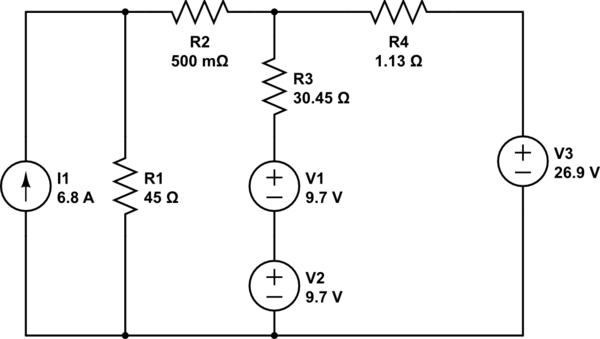I have a problem where I must calculate the resistance required in R3 to have 1A flowing through the two 9.7V sources in the image below (i.e. Charging the batteries at a rate of 1A). I have simplified the initial circuit to what is shown here:

simulate this circuit – Schematic created using CircuitLab
Using Mesh Analysis from left to right I have the values:
I1 = 6.8A
I2 = 5.99637A
I3 = 5.54432A
So the branch of V1, V2 and R3 has a current of 0.45205A (confirmed by circuit simulator). I now need to make the current 1.
Using circuit simulators I have determined that I require the resistance of R3 to be approx. 13.16Ω to achieve 1A through that branch, but I cannot reason the maths to myself (and obviously I need to understand not just give a correct answer).
I've been thinking about it from an Ohms law perspective but I cannot seem to get it to add up. I know that I will = 1 for the branch, but I cannot figure out how to get V to calculate R. Using KVL around the circuit hasn't really helped me either.
I've reasoned for I to equal 1, then I2-I3 = 1 this will however also affect the relationship of I1 to I2. So I'm getting a bit tripped up on reasoning the problem.
Any help in the right direction would be appreciated.




